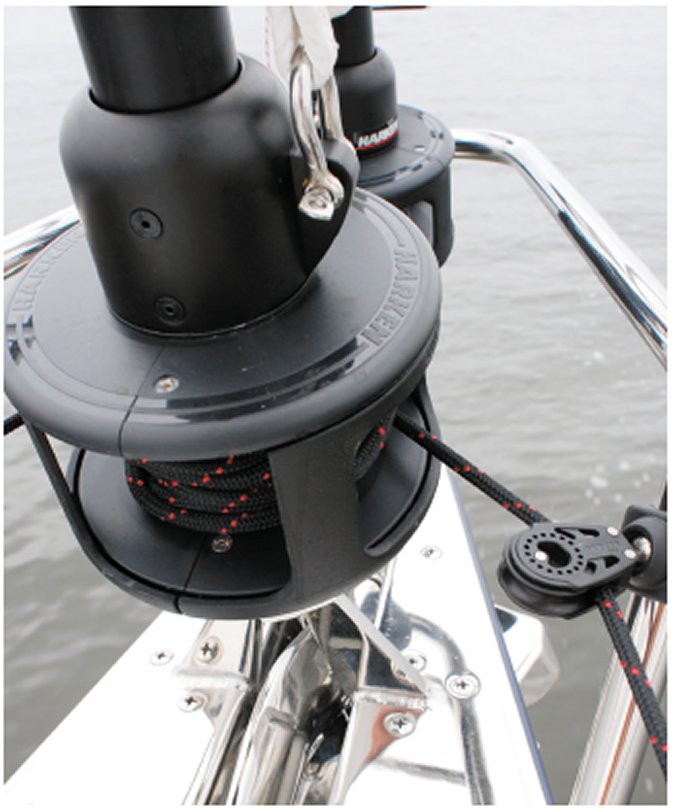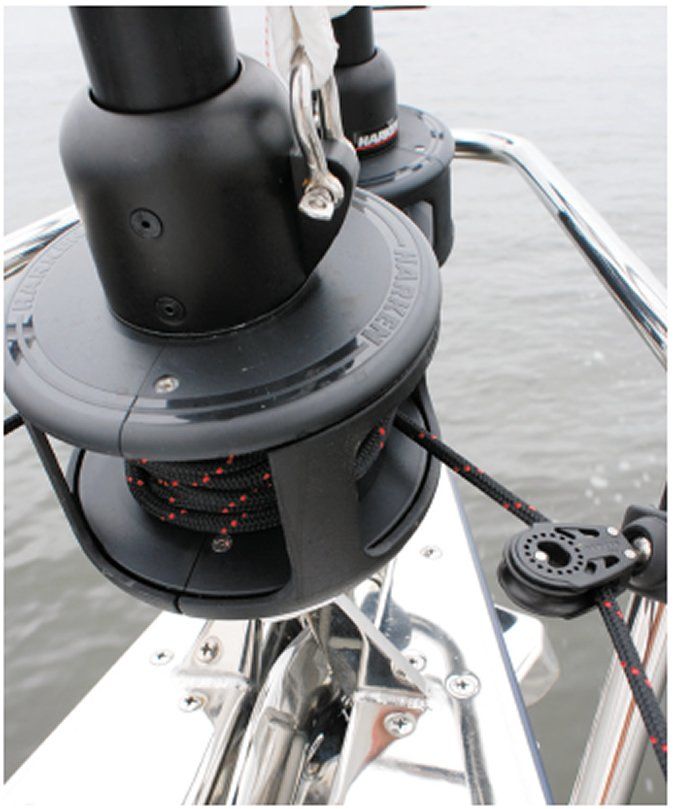
Headsail furling on sailboats 40 feet and shorter should be able to be accomplished with a hand-over-hand pull on the furling line. If a large genoa is set and the breeze fills in abruptly, it may take a little coaxing with a winch to get things going, but when its a fairly light-wind day and you need to start cranking away on a primary winch to instigate the furl, something is wrong with the system.
We have seen foils barber pole, or twist, due to excess tension on the furling line. Such scenarios usually involve torque applied at the drum and an upper swivel that refuses to turn. Bearing failure in the upper swivel is often the cause.
Systems with top foil-attached halyard blocks, which don’t have upper swivels, never face this problem. But they have other sources of friction and are usually suitable only for boats shorter than 35 feet. One of the easiest ways to improve the furling efficiency of all types of furlers is to tackle the line lead challenge. It starts with the angle that the line leads on and off the drum, progresses into a sweeping arc as the line makes its way to the cockpit, and ends with another change in direction that leads the line to the cockpit. All deflection away from a straight run creates friction, and the goal is to keep the accumulation of this parasitic load as low as possible.
We noted that among the 20 products tested, none utilized metal ball bearings. High molecular weight plastics have taken over, but they should still get an occasional washdown to clear grit and salt from the exposed bearing races.
When it comes to cutters and double-headsail sloops, or the addition of an endless line furler, we prefer to lead furling lines to opposite sides of the boat. This tends to make line-handling more straightforward, but does increase hardware needs.







































